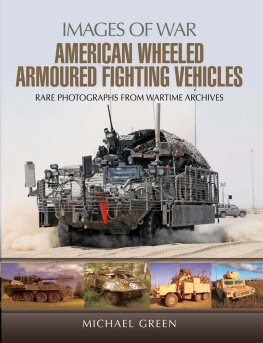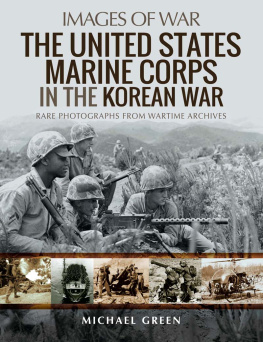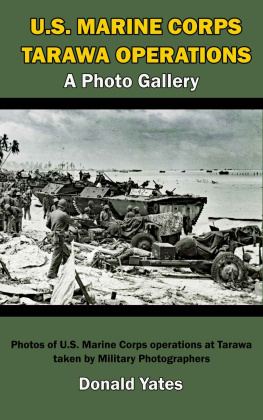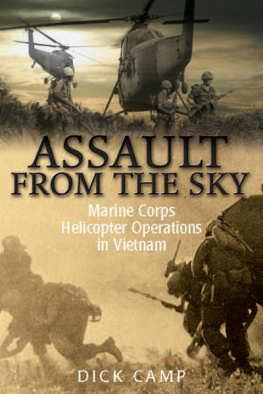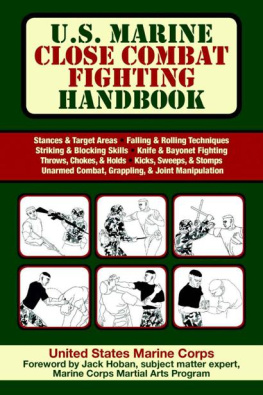Green Michael - United States Marine Corps in Vietnam
Here you can read online Green Michael - United States Marine Corps in Vietnam full text of the book (entire story) in english for free. Download pdf and epub, get meaning, cover and reviews about this ebook. year: 2020, publisher: Pen & Sword Books Limited, genre: Non-fiction. Description of the work, (preface) as well as reviews are available. Best literature library LitArk.com created for fans of good reading and offers a wide selection of genres:
Romance novel
Science fiction
Adventure
Detective
Science
History
Home and family
Prose
Art
Politics
Computer
Non-fiction
Religion
Business
Children
Humor
Choose a favorite category and find really read worthwhile books. Enjoy immersion in the world of imagination, feel the emotions of the characters or learn something new for yourself, make an fascinating discovery.
- Book:United States Marine Corps in Vietnam
- Author:
- Publisher:Pen & Sword Books Limited
- Genre:
- Year:2020
- Rating:3 / 5
- Favourites:Add to favourites
- Your mark:
- 60
- 1
- 2
- 3
- 4
- 5
United States Marine Corps in Vietnam: summary, description and annotation
We offer to read an annotation, description, summary or preface (depends on what the author of the book "United States Marine Corps in Vietnam" wrote himself). If you haven't found the necessary information about the book — write in the comments, we will try to find it.
United States Marine Corps in Vietnam — read online for free the complete book (whole text) full work
Below is the text of the book, divided by pages. System saving the place of the last page read, allows you to conveniently read the book "United States Marine Corps in Vietnam" online for free, without having to search again every time where you left off. Put a bookmark, and you can go to the page where you finished reading at any time.
Font size:
Interval:
Bookmark:

IMAGES OF WAR
RARE PHOTOGRAPHS FROM WARTIME ARCHIVES
Michael Green

First published in Great Britain in 2020 by
PEN & SWORD MILITARY
An imprint of
Pen & Sword Books Ltd
47 Church Street
Barnsley
South Yorkshire
S70 2AS
Copyright Michael Green, 2020
ISBN 978-1-52675-123-2
eISBN 978-1-52675-124-9
Mobi ISBN 978-1-52675-125-6
The right of Michael Green to be identified as author of this work has been asserted by him in accordance with the Copyright, Designs and Patents Act 1988.
A CIP catalogue record for this book is available from the British Library.
All rights reserved. No part of this book may be reproduced or transmitted in any form or by any means, electronic or mechanical including photocopying, recording or by any information storage and retrieval system, without permission from the Publisher in writing.
Pen & Sword Books Limited incorporates the imprints of Atlas, Archaeology, Aviation, Discovery, Family History, Fiction, History, Maritime, Military, Military Classics, Politics, Select, Transport, True Crime, Air World, Frontline Publishing, Leo Cooper, Remember When, Seaforth Publishing, The Praetorian Press, Wharncliffe Local History, Wharncliffe Transport, Wharncliffe True Crime and White Owl.
For a complete list of Pen & Sword titles please contact
PEN & SWORD BOOKS LIMITED
47 Church Street, Barnsley, South Yorkshire S70 2AS, England
E-mail:
Website: www.pen-and-sword.co.uk
The author dedicates this book to Victor H. Krulak, who served in the Marine Corps from 1934 to 1968. Winner of the Navy Cross during the Second World War, he eventually rose to the rank of lieutenant general and was considered a visionary during his time in service. He died at the age of 95 in December 2008.
T he bulk of the historical images in this work are from the files of the United States Marine Corps Historical Center and will be credited USMC. As with all published works, authors depend on friends for assistance in reviewing their work and their help is greatly appreciated.
Reflecting the Marine Corps long-term involvement in the Vietnam War versus the confines of the size and format of the books in this series, this work can only present the most cursory examination of the subject matter. For those looking for more detailed information, the author suggests consulting the Marine Corps ten-part historical series on its participation in the conflict that can be downloaded from the internet in PDF format at no cost.
W hen the simmering conflict in Vietnam heated up, US Marine Corps units had operated there since 1962. In accordance with long-standing contingency plans, elements of the 3d Marine Division, supported by squadrons of the 1st Marine Aircraft Wing, deployed from Okinawa bases to a highly-strategic enclave, centred on Da Nang and the existing air base complex, in the north of the Republic of Vietnam. This area had not been chosen by chance: it had a port, independent of Saigon and others to the south; it had beaches; it also commanded defiles in the coastwise road and rail net. Its main and enduring disadvantage was that it was adjacent to some of the most hard-core Viet Cong regions in-country, both south and inland to the west.
On the heels of the 3d Marine Division followed the 1st Marine Division and Marine Aircraft Group-36 from California bases. By the end of the year, almost two-thirds of the combat units of the Marine Corps were thus committed to the Vietnamese war.
Yet even as successes in combat and pacification mounted for the US forces and their allies, the war was being lost. The native Vietnamese government proved unsuited to gaining and sustaining the loyalty and obedience of its population. In the United States, another people grew weary and impatient of the war, amplified on a daily basis on television and in the printed media to the extent that the president chose against re-election and Congress began to apply halters to the war effort.
Michael Greens detailed summary of the Marine Corps campaign in the Vietnam War demonstrates the ebb and flow of the counter-insurgency and limited conventional wars that took place simultaneously in Indochina. This strange war fought under strange circumstances placed great demands upon the US Defense Establishment and no less upon the Marine Corps. Michael has succeeded well in explaining the conduct of the war and how the Corps responded to the changing challenges it posed. The well-chosen illustrations provide succinct insights to the character of the war and of the Marine and Navy personnel who served year after year in its prosecution.
Kenneth W. Estes
Lieutenant Colonel US Marines
Author of Marines Under Armor (2000)
I n early 1965, due to the South Vietnamese governments political and military instability, American President Lyndon Johnson ordered a US Marine Light Anti-aircraft Missile (LAAM) Battalion of 500 men to the Republic of Vietnam (RVN). The worry was fear of an aerial attack by North Vietnamese aircraft. The men and equipment of the Marine LAAM were in place around Da Nang airfield in northern South Vietnam by 16 February 1965.
In late February 1965, President Johnson decided to commit major ground combat forces of the United States armed forces to secure portions of South Vietnam, referred to as enclaves. The aim was to help stabilize the government of South Vietnam and its military forces. The initial choice would be either a US Army airborne brigade or a Marine Expeditionary Brigade (MEB).
As an MEB contained the organic logistic element and the US Army airborne brigade did not, the decision was to deploy the Marine unit. Between 8 and 9 March 1965, elements of the 9th Marine Expeditionary Brigade (MEB) arrived in South Vietnam unopposed except for minor sniper fire. They came in by sea and air near the coastal city of Da Nang. Their assigned role was the protection of the Da Nang air base and the already-in-place Marine LAAM in an area encompassing roughly 8 square miles.
The men of the LAAM and the 9th MEB would not be the first Marines in South Vietnam. A single Marine officer had arrived in South Vietnam in 1954 as a liaison to the newly-established United States Military Assistance and Advisory Group (MAAG) to the Republic of Vietnam.
By 1964, the number of Marines in South Vietnam had risen to almost 800 men; most were military advisors. However, included in that number were the personnel of a single Marine Medium Helicopter Squadron (HMM, Helicopter Medium Marine). They had arrived at the Da Nang air base in September 1962 to support the Republic of Vietnam Army, hereafter referred to as the ARVN. In contrast, the US Army had approximately 20,000 advisors in South Vietnam by 1964.
The initial Marine troop contingent of the 9th MEB that arrived at Da Nang consisted of approximately 5,000 men, divided into two infantry battalions and two helicopter squadrons. By the end of April 1965, the 9th MEB had around 9,000 men in South Vietnam. Usually in support of an MEB is a single Marine Aircraft Group (MAG). The 9th MEB, however, had two MAGs in support as of March 1965. These consisted of only fixed-wing assets.
Font size:
Interval:
Bookmark:
Similar books «United States Marine Corps in Vietnam»
Look at similar books to United States Marine Corps in Vietnam. We have selected literature similar in name and meaning in the hope of providing readers with more options to find new, interesting, not yet read works.
Discussion, reviews of the book United States Marine Corps in Vietnam and just readers' own opinions. Leave your comments, write what you think about the work, its meaning or the main characters. Specify what exactly you liked and what you didn't like, and why you think so.


